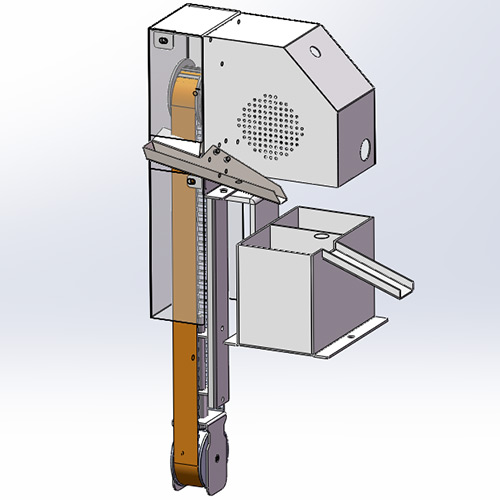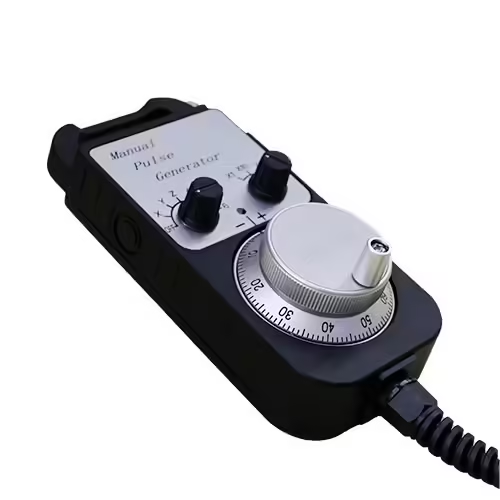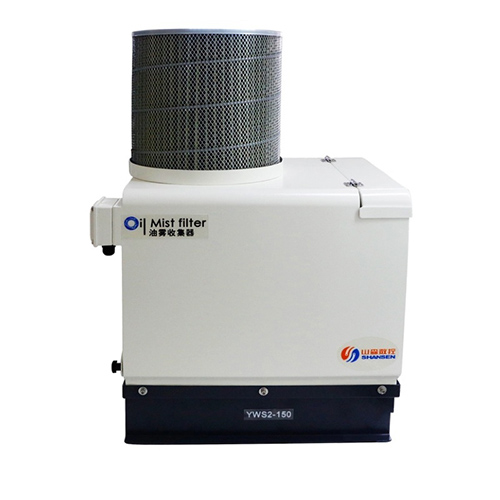-
WhatsAPP: +86 18706448138
-
Tengzhou, Shandong, China

Need an Oil Mist Collector? Read This First
This blog will guide you through everything you need to know about oil mist collectors, from their functionality to their benefits.
Table of Contents
Introduction

In industrial settings like CNC machining, maintaining a clean and safe work environment is critical. Oil mist collectors play a vital role in this process by capturing and filtering oil mist, smoke, and other airborne contaminants generated during machining operations. These devices not only improve air quality but also protect workers’ health, enhance equipment longevity, and ensure compliance with environmental regulations. At Shansen, a leading developer and manufacturer of electrical components for CNC machine tools since 2001, we understand the importance of integrating high-quality oil mist collectors into your operations. This blog will guide you through everything you need to know about oil mist collectors, from their functionality to their benefits and maintenance requirements.
What Is an Oil Mist Collector and Why Does It Matter?
An oil mist collector is a specialized filtration system designed to remove oil mist, aerosols, and fine particles from the air in industrial environments. During CNC machining, cutting fluids and lubricants often create oil mist, which can settle on surfaces, pose health risks, and reduce workplace safety. By installing an mist oil collector, businesses can mitigate these issues, ensuring a cleaner workspace and reducing the risk of respiratory problems for employees. For companies like Shansen, which prioritize precision and reliability in CNC machining, mist oil collectors are essential for maintaining optimal working conditions and protecting valuable equipment.
How Mist Oil Collectors Work
Oil mist collectors operate by drawing contaminated air through a series of filters that capture oil droplets and particulates. The air is then cleaned and either recirculated into the workspace or safely exhausted. Most systems use a combination of mechanical filtration, centrifugal separation, and sometimes electrostatic precipitation to achieve high efficiency. Understanding the mechanics of an mist oil collector is key to selecting the right system for your specific machining needs, whether you’re operating a small workshop or a large-scale manufacturing facility.
Benefits of Using an Oil Mist Collector


Investing in an oil mist collector offers numerous advantages for industrial operations. Here are some of the key benefits:
- Improved Air Quality: Oil mist collectors remove harmful aerosols, ensuring a healthier environment for workers.
- Equipment Protection: By reducing oil residue buildup, these systems extend the lifespan of CNC machines and other equipment.
- Regulatory Compliance: Many industries face strict environmental and safety regulations, and mist oil collectors help meet these standards.
- Cost Savings: Cleaner air reduces maintenance costs and downtime caused by equipment wear or health-related absences.
- Enhanced Productivity: A cleaner workspace improves worker morale and efficiency, contributing to better overall performance.
For Shansen, which has been innovating in CNC machine tool components since 2001, recommending mist oil collectors is part of our commitment to delivering solutions that enhance both performance and safety.
Key Features to Look for in an Mist Oil Collector
When choosing an mist oil collector, it’s important to consider several factors to ensure it meets your facility’s needs. Look for systems with high-efficiency filters, such as HEPA or coalescing filters, which can capture even the smallest particles. Additionally, consider the airflow capacity, ease of maintenance, and energy efficiency of the unit. Some advanced oil mist collectors also offer modular designs, allowing for easy upgrades or customization. At Shansen, we advise our clients to prioritize systems that align with their specific machining processes to maximize effectiveness.
Types of Mist Oil Collectors
Oil mist collectors come in various types, each suited for different applications:
- Centrifugal Mist Oil Collectors: Use spinning motion to separate oil from the air, ideal for high-volume mist environments.
- Electrostatic Mist Oil Collectors: Employ an electric charge to attract and capture oil particles, suitable for fine mist and smoke.
- Media-Based Mist Oil Collectors: Use replaceable filters to trap contaminants, offering versatility for various machining tasks.
Understanding the differences between these types can help you select the most appropriate mist oil collector for your CNC operations.
Oil Mist Collector Specifications Comparison
To help you make an informed decision, the table below outlines key specifications to consider when evaluating oil mist collectors. This table focuses on general features rather than specific brands, ensuring you have a clear understanding of what to prioritize.
| Feature | Centrifugal Oil Mist Collector | Electrostatic Oil Mist Collector | Media-Based Oil Mist Collector |
|---|---|---|---|
| Filtration Efficiency | High for larger particles | Excellent for fine mist and smoke | Versatile for various particle sizes |
| Maintenance Frequency | Low, minimal filter replacement | Moderate, requires electrode cleaning | Higher, regular filter changes |
| Airflow Capacity | 500–2,000 CFM | 300–1,500 CFM | 200–3,000 CFM |
| Energy Consumption | Moderate | Low to moderate | Low |
| Best Application | Heavy-duty machining | Precision machining with fine mist | General-purpose CNC operations |
| Installation Complexity | Simple, compact design | Moderate, requires proper grounding | Simple, modular options available |
This table serves as a starting point for evaluating mist oil collectors based on your operational needs. Always consult with a professional to ensure the system aligns with your facility’s requirements.
Installation and Setup of Mist Oil Collectors
Proper installation of an mist oil collector is crucial for its effectiveness. Most systems are mounted directly onto or near CNC machines, with ducting to channel contaminated air into the collector. Ensure the unit is positioned to capture the maximum amount of oil mist without obstructing workflow. At Shansen, our experience in CNC machine tool components since 2001 has shown that professional installation can significantly improve the performance of oil mist collectors, reducing setup errors and ensuring optimal airflow.
Maintenance Tips for Mist Oil Collectors
Regular maintenance is essential to keep an mist oil collector running efficiently. Replace or clean filters according to the manufacturer’s recommendations, typically every 3–6 months, depending on usage. Monitor the system for signs of reduced airflow or increased noise, which may indicate clogging or mechanical issues. Keeping a maintenance log can help track performance and schedule timely interventions, ensuring your mist oil collector continues to protect your workspace effectively.
Environmental and Health Impacts of Oil Mist Collectors
Oil mist collectors contribute significantly to environmental sustainability and worker safety. By capturing harmful aerosols, these systems reduce the release of pollutants into the atmosphere, helping companies comply with environmental regulations. Additionally, they minimize workers’ exposure to oil mist, which can cause respiratory issues and skin irritation over time. For Shansen, prioritizing worker health and environmental responsibility is a core value, and oil mist collectors align perfectly with this mission.
Common Challenges and Solutions with Oil Mist Collectors

While oil mist collectors are highly effective, they can face challenges like filter clogging, improper sizing, or high energy consumption. To address these, ensure the system is correctly sized for your machining operations, invest in high-quality filters, and schedule regular maintenance. Consulting with experts, like those at Shansen, can help you troubleshoot issues and optimize your oil mist collector’s performance.
Conclusion
Oil mist collectors are indispensable for any CNC machining operation aiming to maintain a safe, efficient, and compliant workplace. From improving air quality to protecting equipment and workers, these systems offer long-term benefits that far outweigh their initial cost. At Shansen, established in 2001 as a leader in CNC machine tool components, we’ve seen firsthand how mist oil collectors transform industrial environments. Ready to enhance your facility with a reliable oil mist collector? Contact us today to explore your options and take the first step toward a cleaner, safer workspace.
FAQ
Can an oil mist collector handle all types of machining fluids?
Most oil mist collectors are designed to handle a wide range of machining fluids, but it’s important to verify compatibility with your specific fluids, such as synthetic or semi-synthetic coolants.
How do I know if my oil mist collector needs maintenance?
Signs include reduced airflow, unusual noises, or visible oil mist escaping the system. Regular inspections and maintenance schedules can prevent these issues.
Are mist oil collectors energy-intensive?
Modern mist oil collectors are designed for energy efficiency, but consumption varies by type and size. Electrostatic models tend to use less power than centrifugal ones.



